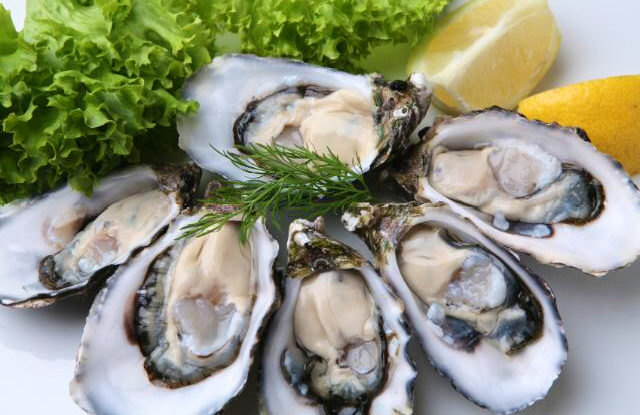My husband loves oysters, I don’t. This is not a big “secret” as I’m fairly picky with my dining options and don’t like trying new foods at my age.
Last weekend, Matthew Wortham was out with me running a few errands and decided to travel the tricky construction area near Pappadeux off highway 30 for lunch with me.
This restaurant has been a family favorite for years and was where we held our wedding reception years ago after marrying in the Fort Worth Botanic Gardens. At the time, we had no idea that we were “breaking the rules” by showing up with a minister and not contacting the venue prior but, that’s another story!
My favorite salad at Pappadeux is the Greek salad and often my husband and I split the salad while ordering other items we split as well that include my favorite, crab cakes.
We sit at the bar as I’ve found for “speedy service” this is the best way to get in and out of dining establishments and time management is always a priority with me.
Watching the employees shuck the oysters, I asked my husband if he was planning to order them to better decide what I would order since obviously, we wouldn’t be sharing oysters.
Eating raw oysters can be deadly, “an oyster is the only animal protein we consume live” explains Dave Blevins, the Food and Drug Administration’s regional shellfish specialist. “If you pop the top off you have a filter-feeding animal with a beating heart.”
Vibrio vulnificus is a naturally occurring bacterium found in oysters harvested from warm, shallow, coastal saltwater. Vibrio can cause gastroenteritis in any healthy person, but it can kill someone who has health problems such as diabetes, cancer, HIV, heart ailments, transplanted organs, hepatitis, or other liver diseases- conditions that many people don’t even know they have, as these diseases can be undetected for years.
Vibrio can also pose a risk to people who have low levels of stomach acid (from taking antacid medications) and to those who take steroids (for arthritis and asthma). The mortality rate is 50 percent for those who become infected with Vibrio and who already have compromised immune systems, making Vibrio the most LETHAL food borne killer. The FDA estimates that 12-30 million Americans are susceptible.
Surprisingly, only about 20 Americans die from Vibrio blood infections each year. In 2002, not one but two Dallas area residents died within three and a half months of each other after consuming raw oysters and the families of both people say that they are those raw oysters at Rockfish Seafood Grill. I’ve ate at this restaurant myself but, it was a hamburger and enjoy dining there with my family on a regular basis. But one thing is certain: if you order Gulf Coast oysters at ANY restaurant and if you want to survive the meal, you had better know how the oysters got to your table!
The Texas Department of Health monitors the water in 14 shellfish growing areas off the coast. Each year in the Gulf of Mexico, nearly 20 million pounds of toxins- oil refinery by products, farming pesticides, heavy metals, and fecal bacteria from raw sewage- become locked into ocean sediments and remain potent for a long time. The TDH usually sends testers out twice a week to sample the safety of Gulf waters. Badly contaminated waters are closed because these filter feeders pump large volumes of water and they pick up and concentrate disease causing bacteria and viruses if they happen in embedded waters.
Fisherman also face the game wardens from the Texas Department of Parks and Wildlife who patrol forbidden waters and board boats to inspect the catches.
From the docks, the oysters go by forklift to a processing plant, the most crucial leg in the oysters journey to your table. How a raw oyster is processed can make the difference between a good meal and a deadly one. At Hillman’s, the oysters go to the picking house, where they are hit with a high pressure wash, put on a conveyer belt and inspected for cleanliness. Workers with culling tools break off bad shells and separate oysters that have become attached to each other. Then they move to the shucking house, where the sound of shells hitting the stainless steel is deafening. Two lines of 20 men sit on stools, facing piles of oysters, shucking like robots. The half shelled oysters go onto trays and are then whisked to a rinsing station, where mud and remaining bits of shell are washed away.
Texas processing plants that use a post-harvest treatment like quick freezing to reduce Vibrio vulnificus to non detectable levels provide safe for consumption oysters.
According to an FDA report, nearly all illness linked to raw oysters have been traced to those harvested from the Gulf during the warmer “non-R” months, May through August. As long as serving Gulf Coast oysters presents a risk, cautious local chefs and restaurants will seek out Blue Pointe oysters that are harvested from sandy bottom areas, in cold churning water. Most of the Gulf oysters have been sitting in mud.
Because of this, my husband always asks where the oysters are from and pays strict attention to the time if year whenever ordering oysters. Matthew is well aware of the risks of eating raw oysters but, apparently enjoys them enough to overlook the health risks involved.
I will never eat oysters or caviar- I prefer shrimp, fresh fish and salmon and, I prefer it cooked!
Ask questions when ordering your next tray of oysters, your health is worth protecting.
Wendy M Wortham









Comments by Wendy Wortham